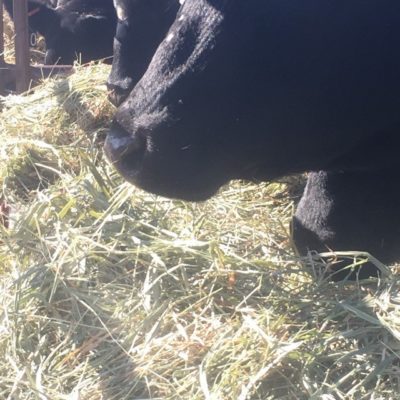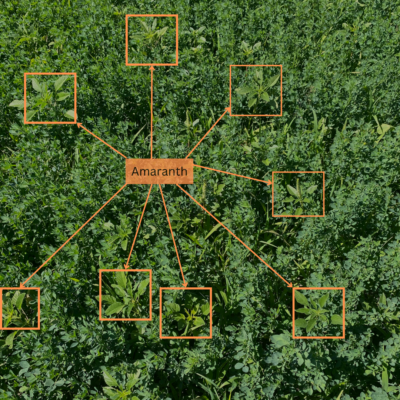One objective of the Conservation Reserve Program (CRP) is to convert cropland into grasslands and preserve wildlife habitat. During periods of drought these lands are opened up to emergency haying and grazing to relieve livestock producers during forage supply shortages. CRP lands are only opened up to haying and grazing after primary nesting season. Therefore, CRP hay is harvested at a very mature state, and not at the optimal time for quality forage production.
CRP hay quality
Primarily, forage samples were submitted by Nebraska beef producers, but some samples were submitted by producers in surrounding states.

Forage quality values were examined on CRP hay samples submitted to Ward Laboratories, Inc. and analyzed by near-infrared spectroscopy with NIRS Forage and Feed Testing Consortium calibrations:
- Protein averaged 6.38 % dry basis
- Acid Detergent Fiber (ADF) averaged 46.27 % dry basis
- amylase treated NDF (aNDF) averaged 67.74 % dry basis and
- NDF digestibility at 48 hours (NDFD48) averaged 43.27 % of aNDF dry basis

Supplementation need for gestating beef cows
Most of these submitted samples would be fed to gestating beef cows in their final third of pregnancy. The required nutrient density of pregnant beef cows are 7.9% crude protein and and energy value of 54% Total Digestible Nutrients (TDN) on a dry basis (NRC 2000). The emergency CRP hay would most likely be baled, stored and reserved to stretch beef herds to spring calving. Consequently, CRP hay nutrient values failed to meet pregnant beef cow requirements largely due to the suboptimal harvest timing.
First, 76.42 % (n = 431) of the CRP hay samples had crude protein concentrations less than the requirement. Additionally, 81.56% (n = 460) of the CRP hay samples had TDN based on ADF lower than the requirement. Overall, 90.07% (n = 508) of the CRP hay samples would require supplementation of protein, energy, or both.
Is grazing an option?
Another option typically opened due to drought conditions along with emergency haying is emergency grazing. According to the FSA, emergency grazing is allowed up to 90 days outside of primary nesting season and at 50% carrying capacity under specific conditions, during primary nesting season. Forage quality is likely higher during primary nesting season as the plants are less mature. Typically lower maturity coincides with lower fiber content and higher protein concentrations.
Therefore, it would be optimal to graze during nesting season, at reduced animal units in drought years. Producers can maximize the nutritional value of forages fed across their operation by timing hay harvest in pastures to match forage quality parameters, while grazing their CRP lands when authorized.
What about wildlife?
There are several recent studies showing that incorporating grazing into CRP acres may enhance avian habitat. Millenbah et al. found that unmanaged CRP lands had a declining benefit to bird species abundance, diversity, and productivity (1996). Management methods including haying, burning, grazing, and disking and interseeding were found to enhance vegetation and avian species diversity (Negus et al. 2010). Finally, while grazing during primary nesting season may have some short-term deleterious effects on avian reproduction, these effects are outweighed by the long-term effect of variable forage densities and heights to support a greater variety of grassland bird species on CRP lands (Kraus et al. 2022, Wilson et al. 2022).
In conclusion, forage quality of CRP hay submitted by producers to our laboratory were poor. Therefore, supplementation for major nutrient requirements, protein, and energy, is needed when feeding CRP hay. Laboratory analysis should be used to determine supplementation needs. Further, cow-calf producers should work with their FSA administrator to determine if grazing CRP lands and haying other pastures earlier in the season for higher quality hay for stored forage in drought conditions would be a viable option.
Presented at the XXV International Grasslands Congress May 2023




